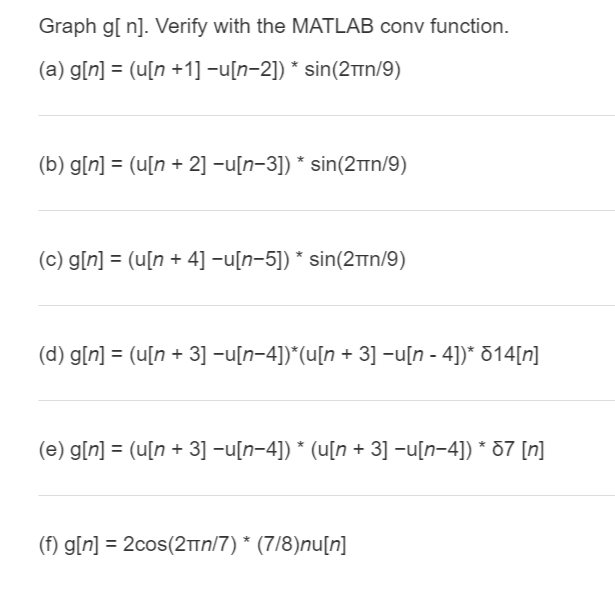
\[G(s)=\frac=2$Īs an option, you can delegate your assignment to experts and get MATLAB homework help online here – at AssignmentCore. My email : My facebook fanpage : MATLAB BKK CENTERT. Here's a simple MATLAB function for computing convolution using the Fast Fourier Transform (FFT), which is simply a fast algorithm for computing the DFT. Convolving Two Functions The conv function in MATLAB performs the convolution of two discrete time (sampled) functions. If do want to get updated Matlab teaching file from me ,Please sent me your email.

We also illustrate the use of the initial- and final-value theorems. Compute the inverse DFT to get the convolution. In the following example, we use MATLAB to construct the Laplace transform of a step response, plot the response with the impulse command, and compare the result with a plot obtained using the step command. We can compute the DC gain directly from the TF form using the Control System Toolbox command dcgain (num, den). In order to use MATLAB efficiently there are two important functions that you. w contains the polynomial coefficients for 2 x 3 + 7 x 2 + 2 x + 7. Write custom convolution function for MATLAB.

u 1 0 1 v 2 7 Use convolution to multiply the polynomials. Create vectors u and v containing the coefficients of the polynomials x 2 + 1 and 2 x + 7. It is the ratio of the constant terms in the numerator and denominator polynomials. Polynomial Multiplication via Convolution. The unit step function takes theoretically zero time to change from 0 to 1.

The unit step function is used to test the low and high-frequency response of any system in a single attempt. y conv (x,h) The operation results in a signed fi object y with a word length of 36 bits and a fraction length of 31 bits. MATLAB unit step function is used to enable representation of a signal or pulse without the need to specify separate functional forms for various ranges of time. The gain at s = 0 is G(0) and is known as the DC gain. Use the function conv () and calculate the convolution between the two sets. Use the conv function to convolve the two vectors.


 0 kommentar(er)
0 kommentar(er)
